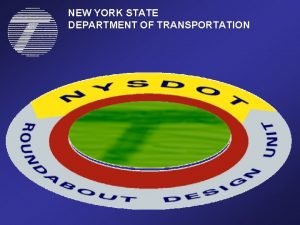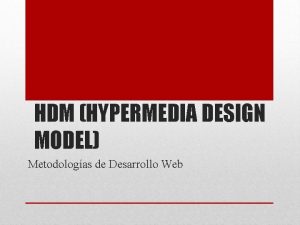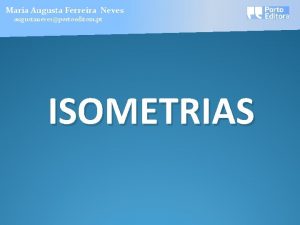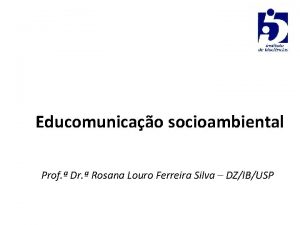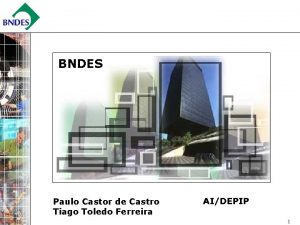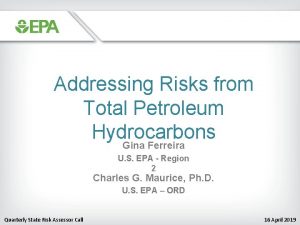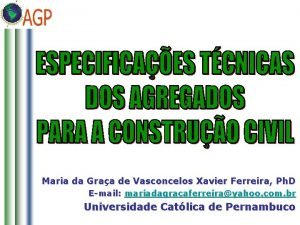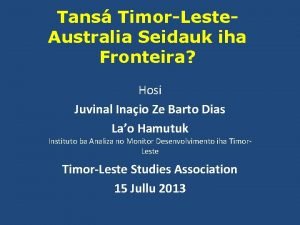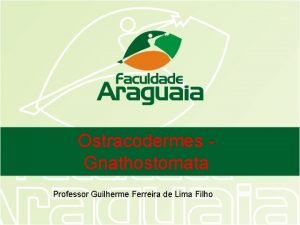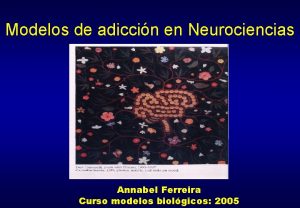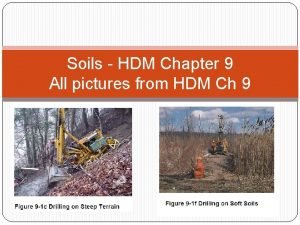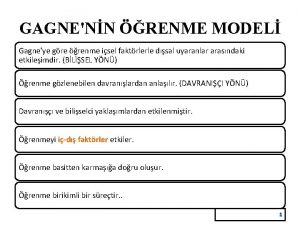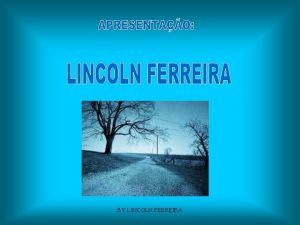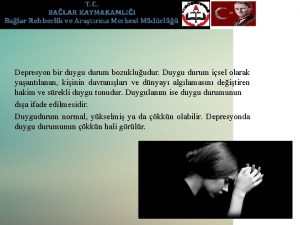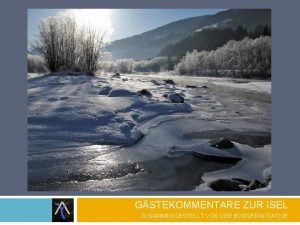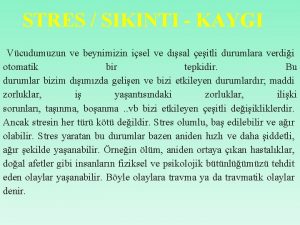2 HDM Model with FCNCs Pedro Ferreira ISEL















- Slides: 15

2 HDM Model with FCNCs Pedro Ferreira ISEL and CFTC, UL Lisbon, Portugal LIP/CFTC Meeting, 30/01/2020 P. M. Ferreira and L. Lavoura, Eur. Phys. J. C (2019) 79: 552

SYMMETRIES OF THE MODEL • The model possesses a CP SYMMETRY, such that all of its parameters are forced to be real. • That is complemented with a Z 3 symmetry which affects both the quark and scalar sectors , such that, with ω = e 2 iπ/3. Recall that n and p and the positive and negative quark fields (not yet rotated to their mass basis) and Γ, Δ are the 3× 3 Yukawa coupling matrices, the Yukawa lagrangian being given by • We do not address the leptonic sector in this work – it is easy to see it can be chsen to be flavour conserving, like one of the regular 2 HDM types).

SYMMETRIES OF THE MODEL • The Z 3 symmetry BREAKS FLAVOUR CONSERVATION bcause it treats each generation differently. Therefore, tree-level flavour changing neutral currents (FCNC) mediated by scalars are to be expected. • The scalar potential becomes indistinguishable from that of a Peccei-Quinn model, where we have SOFTLY BROKEN the Z 3 symmetry via the COMPLEX m 12 parameter. • The phase θ is the only source of CP violation in the model! • But for the scalar sector, it is easy to think of this phase as vanishing through a doublet phase redefinition – it will turn out later in the fermion sector!

THEORETICAL BOUNDS ON 2 HDM SCALAR PARAMETERS Potential has to be bounded from below: Theory must respect unitarity: (for the current model these conditions are valid, with of course λ 5 = 0)

SPONTANEOUS SYMMETRY BREAKING: Doublet field components: Both doublets may acquire REAL vevs, v 1 and v 2, such that Definition of β angle: (yes, it is unphysical in this model, in principle – call it a placeholder variable. . . ) Definition of α angle (h, H: CP-even scalars): (without loss of generality: -π/2 ≤ α ≤ + π/2)

THE YUKAWA SECTOR • The Z 3 symmetry’s impact on the Yukawa matrices is to reduce them to a very simple form (after rephasings), • The quark mass matrices are then REAL and given by which are bi-diagonalized by matrices UL and UR such that


THE YUKAWA SECTOR • But the matrices Nd and Nu are NOT diagonal in the quark mass basis, due to flavour violation, and therefore we have scalar-mediated tree-level FCNC!

PHENOMENOLOGY • The model has 7 parameters in the scalar sector, and 10 non-zero entries of the Yukawa matrices. It needs to fit the W and Z mass, the observed Higgs boson mass (and SM-like behaviour) and correctly reproduce the quark masses and CKM matrix entries. We took for the quark sector the following values: • The Higgs boson mass was demanded to be equal to 125 Ge. V, and chosen to be the lighter of the neutral scalars. • The occurrence of FCNC means that a series of mesonic observables wil have to be looked into. Other B-physics constraints, such as b → s γ, will also need to be modified to take into account the neutral scalars’ contributions.


HIGGS ALIGNMENT CUTS • The observed Higgs boson has been found, at the LHC, to behave ina manner quite consistent with SM expectations – so the 2 HDM “h” state should be almost aligned with the SM Higgs. • The main experimental observables concerning the 125 Ge. V scalar are the ratios of observed and expected (in the SM) cross section times branching ratios, for the channels pp → h → XX (with X =. . . ), • Current uncertainties still allow for non-SM scalars to conform to experimental values. Requiring that μX does not deviate by more than 20% from 1 (exact SM behaviour) on all channels does an effective description of current experimental constraints. • For a first exploration, only the gluon-gluon fusion cross section was considered. But VBF and other processes would be well described.

Pseudoscalar FCNC interactions can be enhanced/suppressed by factors of tanβ h FCNC are suppressed by factors of cosβ – α) H FCNC are “enhanced” by factors of sin(β – α) Charged FCNC interactions can be enhanced/suppressed by factors of tanβ

PROPERTIES OF THE EXTRA SCALAR The heavier CP-even H boson has ZZ decays well below the current experimental limit: The yellow line is the upper 2σ limit from ATLAS. Blue (red) points have a cut on the Higgs rates μX of 20% (10%).

PROPERTIES OF THE EXTRA SCALAR Likewise for current limits from tt or hh searches. The yellow line is the upper 2σ limit from ATLAS. Blue (red) points have a cut on the Higgs rates μX of 20% (10%). The green points are a subset of the red ones, for which the width of the scalar is larger than 10% its mass.

Blue (red) points have a cut on the Higgs rates μX of 20% (10%).
 Nysdot hdm chapter 5
Nysdot hdm chapter 5 Hypermedia design model
Hypermedia design model 7 tipos de frisos
7 tipos de frisos Rosana louro ferreira silva
Rosana louro ferreira silva Alysson ferreira
Alysson ferreira Tiago toledo ferreira
Tiago toledo ferreira Maria de jesus quental ferreira
Maria de jesus quental ferreira Gina ferreira
Gina ferreira Rui seabra ferreira junior
Rui seabra ferreira junior Despredicio
Despredicio Rafael de vasconcelos xavier ferreira
Rafael de vasconcelos xavier ferreira Juvinal ferreira
Juvinal ferreira Metade de mim ferreira gullar
Metade de mim ferreira gullar Guilherme ferreira sharkk
Guilherme ferreira sharkk Annabel ferreira
Annabel ferreira Tipos de libros contables
Tipos de libros contables
